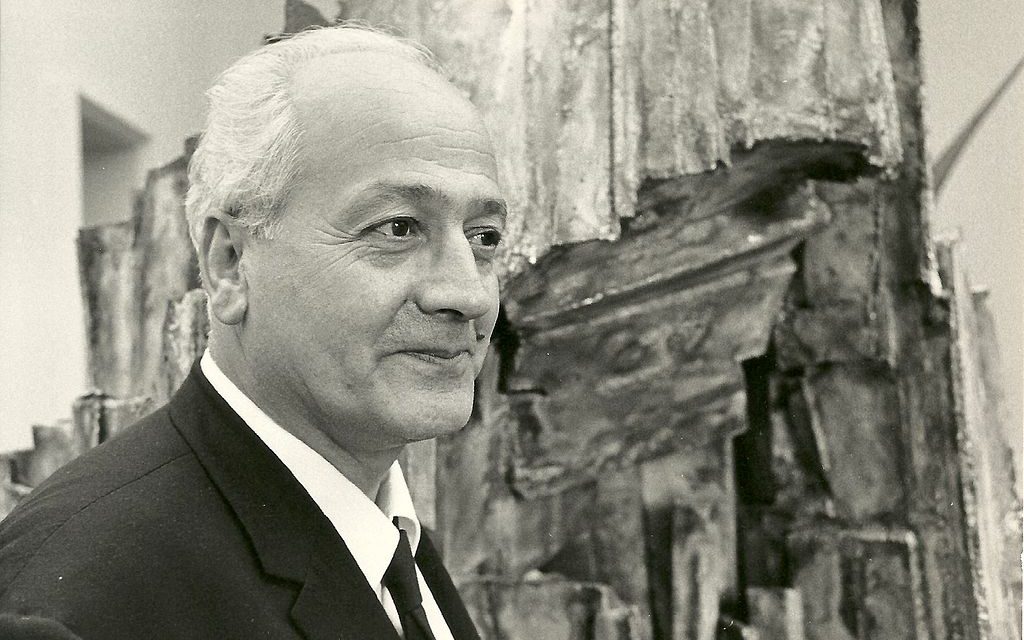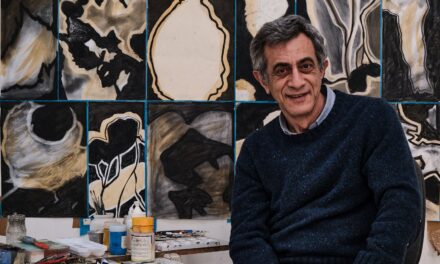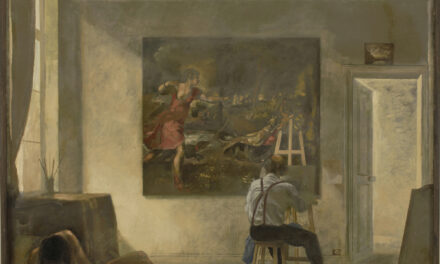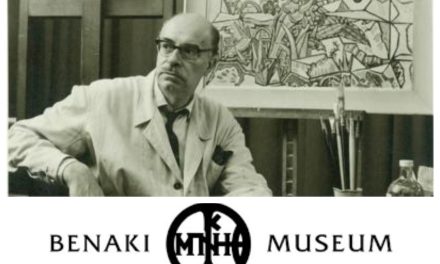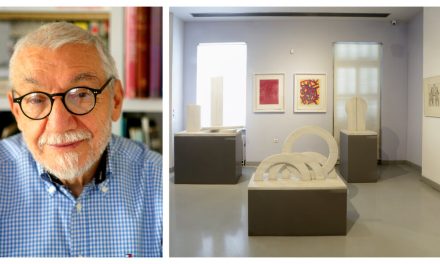“I don’t care about success and I never did! Not that I don’t enjoy it when people recognize my work. On the contrary, I really like it. It is just that I always believed that when something is worth discovering, it will be. It can’t stay hidden.”
A new exhibition titled “George Zongolopoulos: Familiar projects, sculptures from his home and studio” is currently taking place at the Roma Gallery in collaboration with the George Zongolopoulos Foundation. Curated by art historian Katerina Koskina, the exhibition will be running through February 29, showcasing for the first time many “widely unknown” sculptures of medium and small scale created by George Zongolopoulos, which had been in the artist’s company at his home and studio in Psychiko.
Bronze, stainless steel, Plexiglas are the media and raw materials of sculptures that have been crafted for some 50 years, covering different creative periods of the renowned sculptor. Thus, the exhibition could be seen as a projection of the evolution of the artist’s creative thinking that has transcended the century, while remaining classical in terms of technique and education and contemporary and modern in the integration of new challenges and methods into his work.
Even though Zongolopoulos is internationally renowned as a sculptor, he has never stopped painting and his evolution from realism to abstraction is also apparent in his paintings. Thus, the Roma Gallery exhibits include two paintings that the artist selected and produced in silkscreen, seeking to emphasize his long involvement with modernism as well as his path in abstraction and technology.
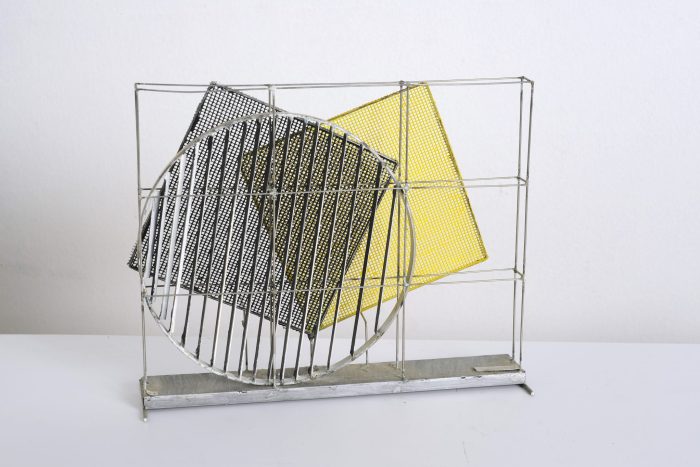 “In art, something weird happens… ‘you devour with your eyes’ a painting you like that inspires you, but in a strange way while you get enough seeing it nothing really happens to the painting which still stays there waiting for the next pair of eyes to devour it! In other words this is the work of art: a human product with no expiration date!”
“In art, something weird happens… ‘you devour with your eyes’ a painting you like that inspires you, but in a strange way while you get enough seeing it nothing really happens to the painting which still stays there waiting for the next pair of eyes to devour it! In other words this is the work of art: a human product with no expiration date!”
George Zongolopoulos (1903-2004) was born in Athens and studied sculpture at the Athens School of Fine Arts (1924-1930) with Thomas Thomopoulos. In 1930 he began working as an architect for the Ministry of Education on school buildings, churches and museums, 1938 he resigned from his position to devote himself to sculpture.
“Great sculpture cannot be understood without architecture.”
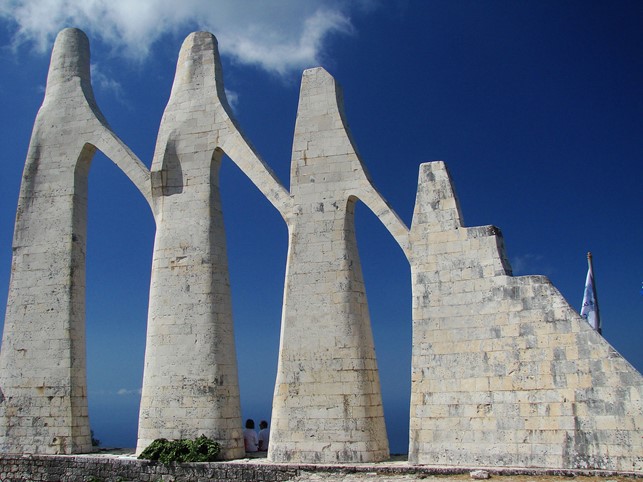 A bold and imaginative artist, he began with realistic depictions of human forms in plaster, marble, stone and bronze, before progressively advancing towards stylization and abstraction. Since around 1960, he turned to abstraction, creating constructivist metal works. His materials have progressively expanded to embrace various combinations of nickel, glass, Plexiglas, stainless steel, lenses, springs, nails, pipes, umbrellas, and beams. He also introducedvoid into his compositions. Moreover, water, sound and movement all contribute to the overall effect of his works.
A bold and imaginative artist, he began with realistic depictions of human forms in plaster, marble, stone and bronze, before progressively advancing towards stylization and abstraction. Since around 1960, he turned to abstraction, creating constructivist metal works. His materials have progressively expanded to embrace various combinations of nickel, glass, Plexiglas, stainless steel, lenses, springs, nails, pipes, umbrellas, and beams. He also introducedvoid into his compositions. Moreover, water, sound and movement all contribute to the overall effect of his works.
Zongolopoulos or the “eternal teenager” as they called him, always searched for the measure and harmony in his art and was particularly interested in the integration of sculpture with the environment. He received many official prizes such as the first award for the Monument for the Women Heroes at Zalongo (1954-1960) in collaboration with the architect Patroclos Karantinos. He also participated in all the National Art Exhibitions, as well as in dozens of solo and group exhibitions in Greece and abroad. Moreover, his name would be associated with the Venice Biennale in which he participated several times over a period of sixty years: from 1940 to 2001 when, at the age of 99, he took part for the last time with the mobile sculpture “Five Circles”, which was later installed at Omonia square.
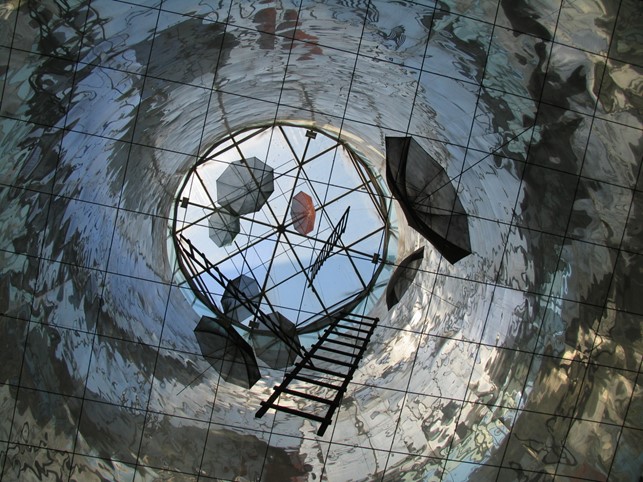 As an artist, Zongolopoulos believed that ”sculptures belong to everybody” and therefore studied and constructed many large-scale sculptures which, during his long creative life, were installed in major public spaces in Greece, Europe and the US. Among them, the 13-meters high sculpture “Umbrellas”, an ethereal construction expressing the infinite vividness of its creator. Initially presented at the 46th Venice Biennale for the celebration of the 100 years of the institution, the sculpture was later installed at Thessaloniki’s New Waterfront, on the occasion of its election as the Cultural Capital of Europe (1997) and until this day, it remains a reference point for the city attracting the interest of both locals and visitors.
As an artist, Zongolopoulos believed that ”sculptures belong to everybody” and therefore studied and constructed many large-scale sculptures which, during his long creative life, were installed in major public spaces in Greece, Europe and the US. Among them, the 13-meters high sculpture “Umbrellas”, an ethereal construction expressing the infinite vividness of its creator. Initially presented at the 46th Venice Biennale for the celebration of the 100 years of the institution, the sculpture was later installed at Thessaloniki’s New Waterfront, on the occasion of its election as the Cultural Capital of Europe (1997) and until this day, it remains a reference point for the city attracting the interest of both locals and visitors.
”I am glad that my work was installed in its natural environment” he said.
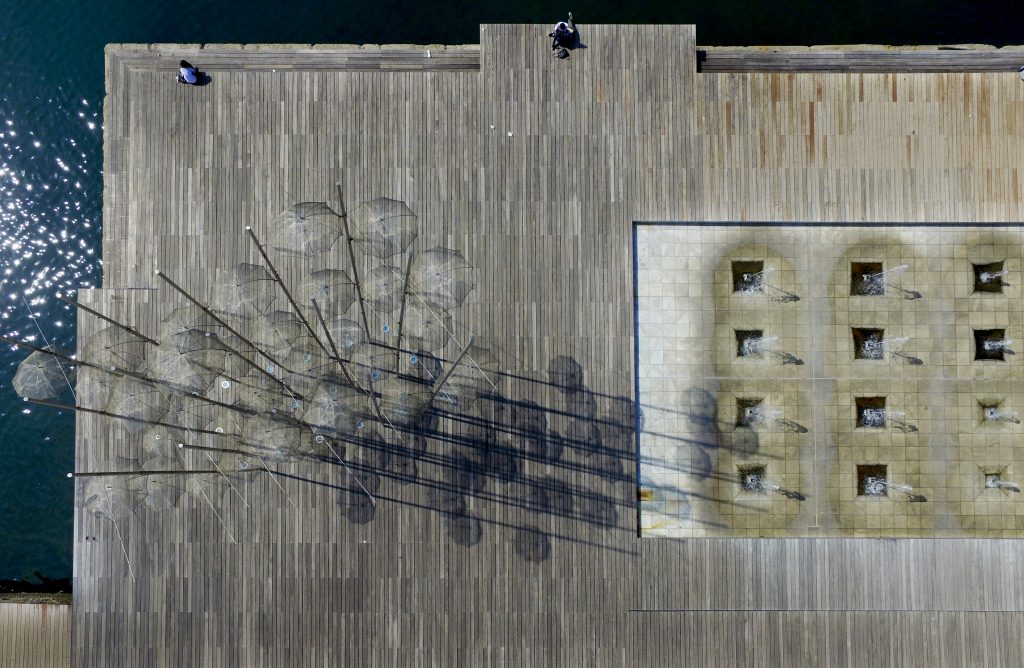 Shortly before his death, in 2004, the sculptor founded the George Zongolopoulos Foundation established at his residence in Psychiko. He bequeathed all his works to the Foundation, as well as the work of his wife, painter Helen Paschalidou- Zongolopoulou. The organization’s objectives are, among others, to study the life and work of its founder George Zongolopoulos, to support talented new sculptors through the scholarships awarded to graduates of the School of Fine Arts, and to promote Greek painting and sculpture in general.
Shortly before his death, in 2004, the sculptor founded the George Zongolopoulos Foundation established at his residence in Psychiko. He bequeathed all his works to the Foundation, as well as the work of his wife, painter Helen Paschalidou- Zongolopoulou. The organization’s objectives are, among others, to study the life and work of its founder George Zongolopoulos, to support talented new sculptors through the scholarships awarded to graduates of the School of Fine Arts, and to promote Greek painting and sculpture in general.
It is worth noting that, serving George Zongolopoulos’ vision to make art accessible to the public, the G. Zongolopoulos Foundation and the Organization of Social Solidarity Culture and Sports of Filothei-Psychiko Municipality have established the Open air Glyptotheque at Psychiko-Zongolopoulos’ Square, a pioneering venue, the first of its kind in Greece, as it is the only public outdoor sculpture gallery in Greece devoted to an artist.
E.S.
TAGS: ARTS | FESTIVALS | GLOBAL GREEKS | HERITAGE

